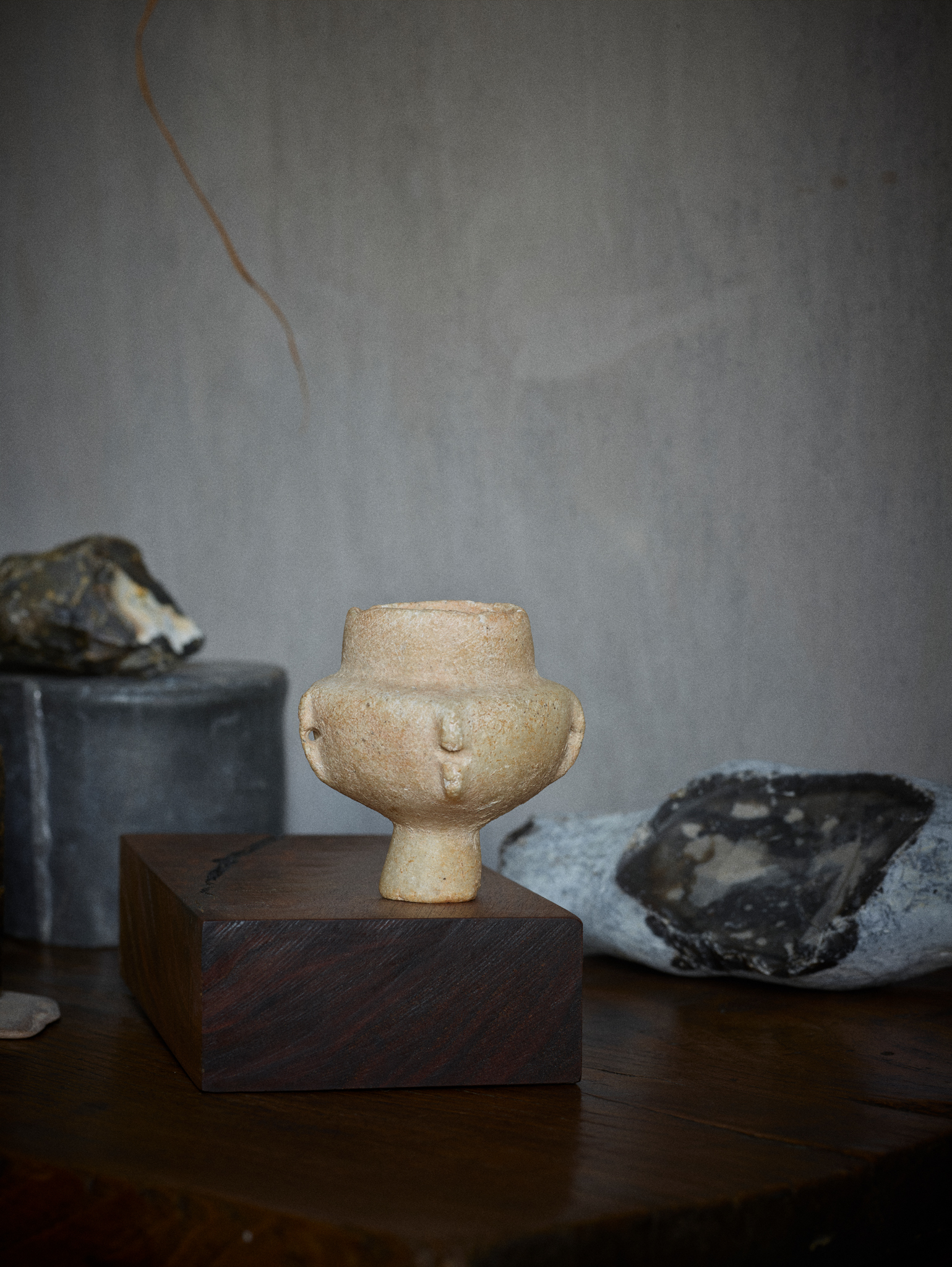ANCIENT CYCLADIC KANDILA VASE
GREECE, C. 3200 - 2700 B.C.
Estimate: £6,000 - £8,000
Auction: 13 March 2025 from 13:00 GMT
Description
carved marble, the vessel stands upon a tall conical pedestal foot, featuring a hemispherical body adorned with four prominent, elongated vertical suspension lugs, each perforated, situated below a broad, conical, collared rim
Dimensions
15.6cm tall
Provenance
Sold Münzen und Medaillen, Weil am Rhein, 1975, Katalog 51, lot 9
Previously in a private German collection
Footnote
The Cyclades, an archipelago in the southwestern Aegean, comprises thirty-nine small islands and many more islets. In ancient Greek, they were referred to as the kyklades, envisioned as a circle (kuklos) around the sacred island of Delos, home to the most sacred temple of Apollo.
In the fourth millennium B.C., a distinctive culture emerged in these islands, thriving for over two thousand years. Situated in a favourable location in the Aegean Sea and rich in mineral resources, particularly iron ores and copper, the inhabitants of the Cyclades benefitted from trade in these raw materials at a time when metallurgy was rapidly advancing across the Mediterranean. While existing tangentially to the great civilizations of the Minoans and Mycenaeans, the Cycladic people are counted among the three major Aegean cultures.
Produced in both marble and clay, vessels such as the present example, known as kandila, typically held liquids, such as oil or wine. Cords strung through the pierced lugs around the body could be used to hang the vase or attach a lid. Frequently found in tombs with marble figures, the vessels may have served a function in funerary rituals.
Whatever their original purpose, kandila vessels stand as enduring symbols of Cycladic craftsmanship, blending functionality with aesthetic refinement. Their harmonious proportions, minimalist design, and subtle decoration reflect a culture deeply attuned to both artistry and utility.

